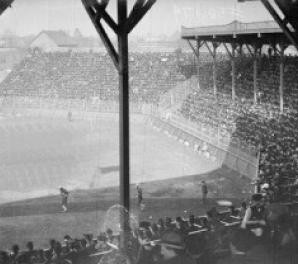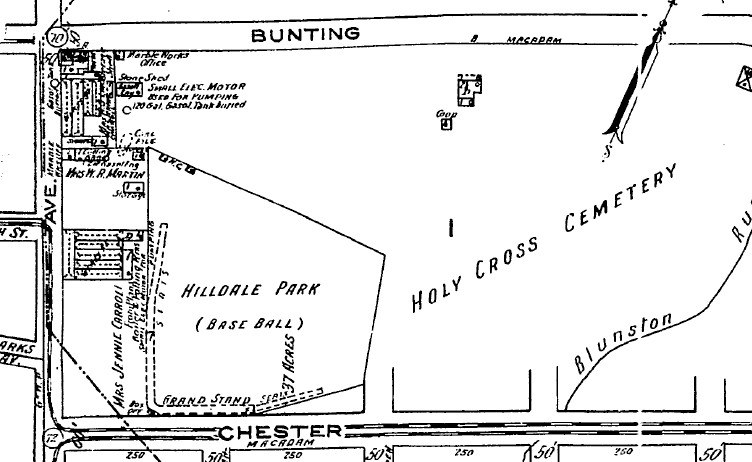Hilldale Park
Introduction
Text-to-speech Audio
Images
Hilldale Park

Hilldale Park Layout

Backstory and Context
Text-to-speech Audio
Located in Derby, PA, Hilldale Park was the longtime home of the Hilldale Daisies. During the 1920s, the Hilldale Daisies were one of the most successful Negro League Clubs. Dominating the early Eastern Colored League, they won the pennant each of the league’s first three years. In addition to the Hilldale Daisies, other lesser known African American baseball teams also used Hilldale Park. One of the most notable sites in the ballpark was a large tree behind the centerfield fense that had branches extending over the fence.
To explain more about the Hilldale Daisies and the kind of success and baseball history that Hilldale Park witnessed, here is a list of some of the baseball hall of famers who played there. They include: Pop Lloyd, Louis Santop, Oscar Charleston, Ben Taylor, Joe Williams, Biz Mackey, Martin Dihigo, and Judy Johnson. As for the Daisoes, they played in the first ever Negro League World Series where they lost to the Kansas City Monarchs in a close contest, but they returned in 1925 to the Negro League World Series and won by defeating the Kansas City Monarchs five games to one.
After 18 years of play at Hilldale Park, which began on May 16, 1914 with a crowd of 3,000 spectators, the Hilldale Daisies folded in 1932. Despite their initial success that even warranted an enlargement of the park to account for a growing crowd of both whites and Blacks, the economic stress of the early 1930s led to the team’s collapse. Today, there is a marker where the field was that depicts Hilldale Park’s historical significance.
Cite This Entry
Milam, Chandler. "Hilldale Park." Clio: Your Guide to History. July 11, 2014. Accessed April 2, 2025. https://theclio.com/tour/1860/25

